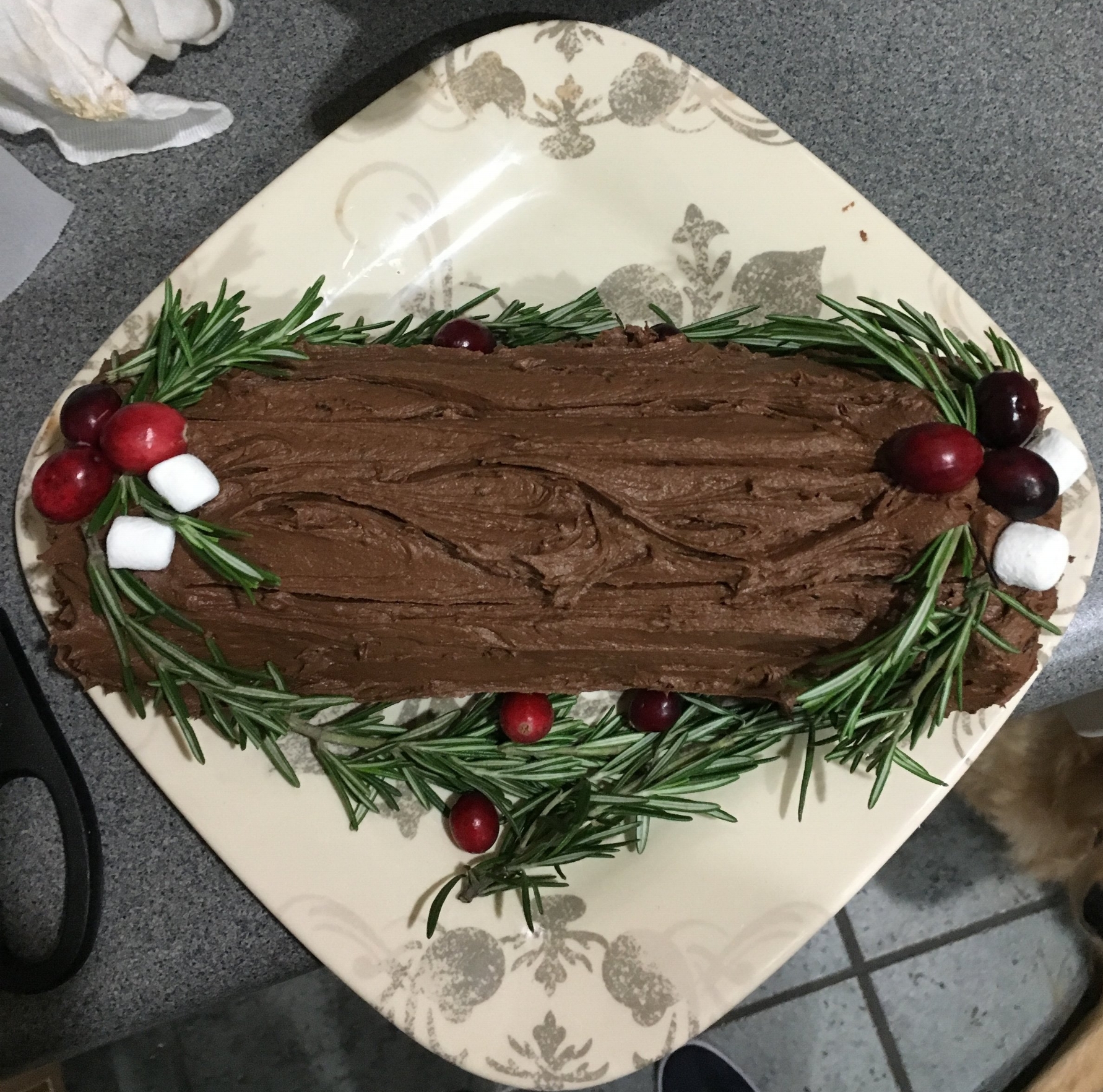Joyeux Noël!
Minuit ! Chrétiens, c'est l'heure solennelle
Où l'homme Dieu descendit jusqu'à nous.
-Placide Cappeau (1847)
As French and music teacher, French music has always held a fascination for me! This time of year, my mom, my sister Kerri (a fellow French teacher), and I enjoy sharing some of our favorite French Christmas traditions with each other. These include baking the traditional “Bûche de Noël” (Yule Log), drinking “Esprit de Noël” French tea, and listening to French Christmas carols. Last year Kerri and I taught the original French carol “Les anges dans nos campagnes” to our respective classes, reminding students that not all of our beloved carols are English in origin. “Minuit Chrétien,” (another French original) is my personal favorite, which I now love to sing in both French and English! (In my last blog I talk about its significance to our family, remembering my mother singing the English version for our many Christmas shows!)
If you want to mix it up a bit this Christmas season, try baking your own “Bûche de Noël,” sip on delicious French tea, and listen to the following Christmas carols in French! Enjoy the renditions of many famous francophone artists over the years, from the 1950s to the present, as well as some beautiful traditional gems. If you feel particularly ambitious, write down the English equivalent of the songs, and check back next Friday for the answers! (The last two are only in French.)
Tastes of Christmas
French “Bûche de Noël” recipe
http://www.marthastewart.com/354925/buche-de-noel
Uptown Violins’ Favorite French tea
http://www.mariagefreres.com/FR/2-esprit-de-noel-the-noir-TJC921.html
Les Chansons de Noël
1. Les anges dans nos campagnes : chanson traditionnelle https://www.youtube.com/watch?v=_Ap-zj7H23g
2. L’enfant au tambour : chanson traditionnelle
https://www.youtube.com/watch?v=M1ncR6HSmKg
3. Le petit renne au nez rouge : chanson d’enfant
https://www.youtube.com/watch?v=QsZsu7rLr3A
4. Mon beau sapin : Tino Rossi
https://www.youtube.com/watch?v=KFdVoKnPTKQ
5. Promenade en traineau : Fernand Gignac
https://www.youtube.com/watch?v=4Kq2f70CEQQ
6. Noël Blanc: Dalida
https://www.youtube.com/watch?v=oZY-GBact_o
7. Vive le vent : Ginette Reno
https://www.youtube.com/watch?v=t8yQaB22Atc
8. Un Noël d’amour: Pierre Lalonde https://www.youtube.com/watch?v=8Z6GZc21QuM
9. Minuit Chrétien : Nicole Martin
https://www.youtube.com/watch?v=gm_UwsDTvik
10. Père Noël arrive ce soir: Céline Dion
https://www.youtube.com/watch?v=ltt1YqSKMpw
11. Au royaume du bonhomme hiver: Roch Voisine https://www.youtube.com/watch?v=MGnby1FHtcw&list=PLpdMoG1R00J5id0bAKFUg-19L0Nl-HaLM&index=3
12. Joyeux Noël : Marie-Élaine Thibert https://www.youtube.com/watch?v=cGWhyYwDTG0&list=RDcGWhyYwDTG0
13. Douce nuit, sainte nuit- chanson traditionnelle
https://www.youtube.com/watch?v=i0HvkYD5Ec4
14. Petit Papa Noël : Josh Groban : https://www.youtube.com/watch?v=jM1tfaM5y1o
15. La plus belle nuit : Marie Denis Pelletier
https://www.youtube.com/watch?v=WtM4PWzK3Q8
****************************************************************************************
First Fridays with Uptown Violins is hosted by Ashley Rescot, Director of Public Relations. Ashley received her Bachelor of Music from Baylor University, as well as minors in French and English. She taught English as a Fulbright scholar in France for a year, and then obtained her Master’s Degree in French Literature at the University of Kansas. She has taught French to all ages, including a Maman et Moi baby French class, as well as collegiate French levels I-IV. She teaches her own private violin studio and performs throughout the Midwest. Research interests include the relationship between music education and language acquisition, as well as the connection between music and other forms of artistic expression.





































